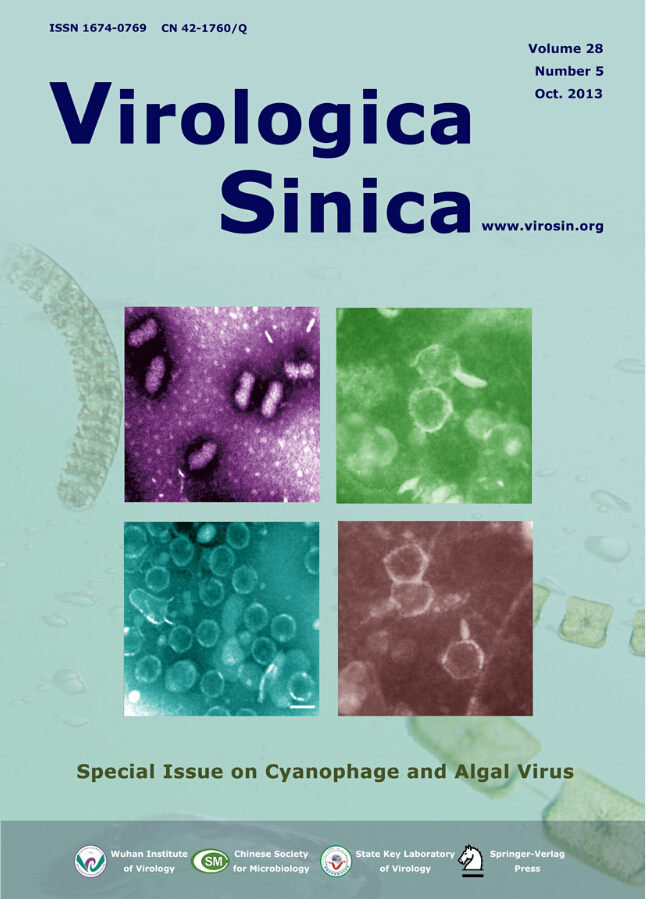-
Cyanobacteria and eukaryotic algae are abundant in freshwater and marine environments, and are fundamentally important in global biogeochemical cycles and for primary productivity. Under certain conditions, such as an excess of nutrients due to human activities through fertilizers or sewage, cyanobacteria and algae can form water blooms that have various negative impacts on aquatic ecosystems.
Cyanophages and algal viruses are the viruses that infect cyanobacteria and algae, respectively. These viruses co-exist with their hosts in various aquatic environments, and are important in controlling host populations. Therefore, cyanophages and algal viruses are regarded as potential bloom control agents and have been investigated since the 1960s.
In the early days, cyanophage and algal virus researches were focused primarily on virus isolation and characterization, virus–host dynamics, and diagnostic tools. Later, with the development of genome sequencing and metagenomics, more and more cyanophages and algal viruses have been identified and completely sequenced. The annotation of viral genomes has enriched our understanding of viral–host interactions and their evolution.
Recently, water blooms have become a highly serious problem in various lakes and coastal areas in China. Many efforts have been made to investigate local cyanophages, and to identify local viral strains to be used in the management and control of water blooms.
In this special issue, a minireview of freshwater cyanophages was included to cover the area that has not been widely summarized (Xia H, et al., 2013a). Isolation of several new cyanophages was presented, including a marine siphovirus (S-SJ2) infecting Synechococcus (Zhang Y, et al., 2013); a freshwater myovirus (MaMV-DC) infecting Microcystis aeruginosa (Ou T, et al., 2013); a freshwater Geminivirus-like cyanophage (AcGV-L) infecting Anabaena compacta; and a freshwater corticovirus-like cyanophage (MaCV-L) infecting M. aeruginosa (Li S H, et al., 2013). In addition, the complete genome sequence and host range of PP, the first cyanophage isolated in China, were reported (Zhou Y R, et al., 2013; Zhou Q C, et al., 2013). Metagenomics was applied and many cyanophages and algal viruses were identified in the East Lake in Hubei, China (Ge X Y, et al., 2013). The dynamics of M. aeruginosa and Ma-LMM01-type cyanophage in the lake was also studied (Xia H, et al., 2013b). Apart from the above studies focusing on China, an investigation of a coccolithovirus in samples collected from the Atlantic Ocean, the North Sea, and the English Channel, showed that a combination of viral structural markers and metabolically relevant markers are useful in the study of the phylogeny and functional biodiversity of algal viruses (Nissimov J I et al., 2013).
Due to space and time limitations, this issue was unable to include several related topics. For example, most reports focused on researches in China and less was included regarding algal viruses than cyanophages as well as marine cyanophages than freshwater cyanophages. However, we hope the relatively narrow scope of this issue will still provide readers with a broad view of cyanophage and algal virus with their biodiversity and potential impacts on our planet.
Cyanophage and Algal Virus
- Received Date: 09 September 2013
- Accepted Date: 24 September 2013
- Published Date: 29 September 2013
Abstract:













 DownLoad:
DownLoad: